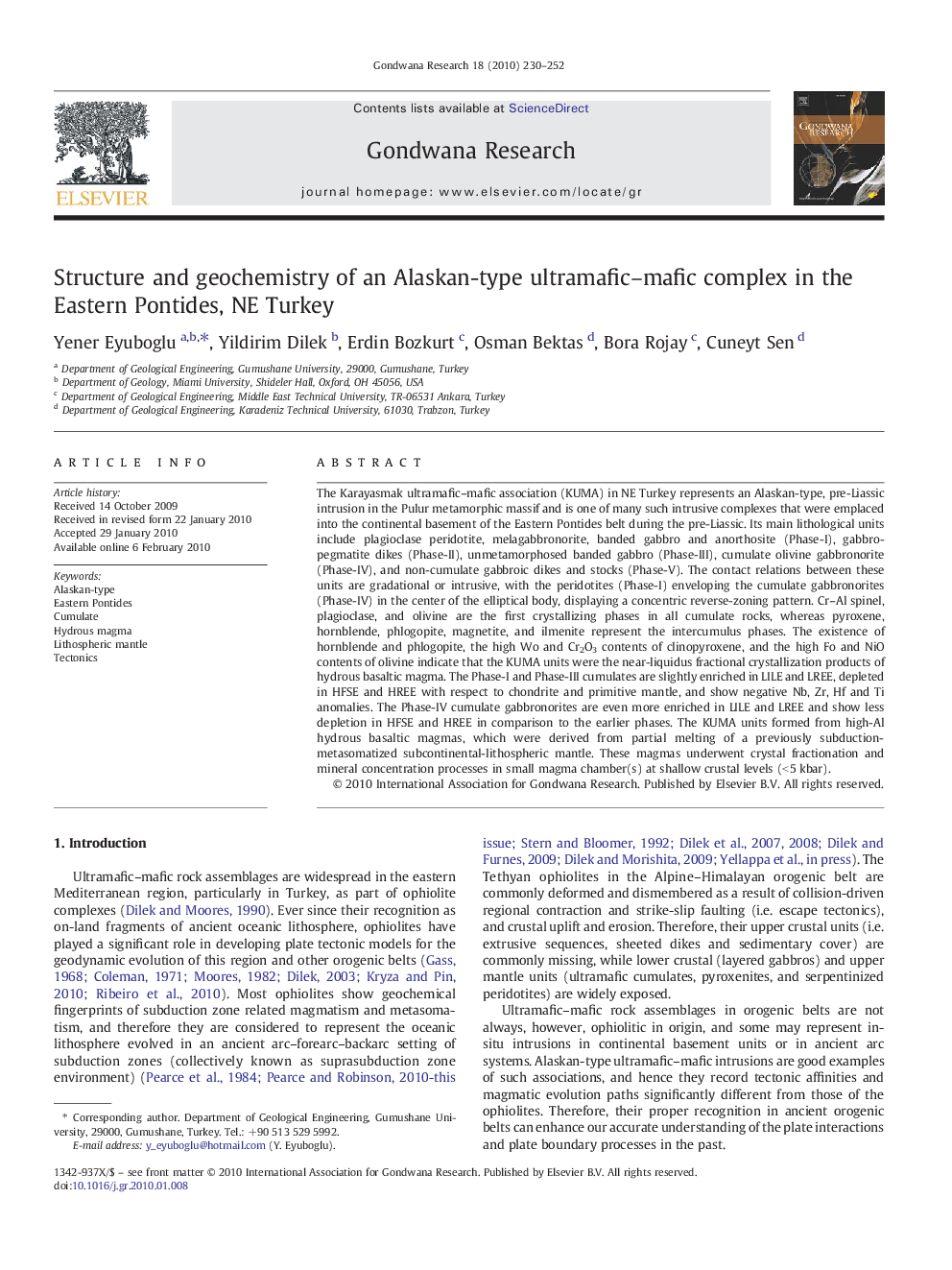| کد مقاله | کد نشریه | سال انتشار | مقاله انگلیسی | نسخه تمام متن |
|---|---|---|---|---|
| 4727853 | 1356399 | 2010 | 23 صفحه PDF | دانلود رایگان |

The Karayasmak ultramafic–mafic association (KUMA) in NE Turkey represents an Alaskan-type, pre-Liassic intrusion in the Pulur metamorphic massif and is one of many such intrusive complexes that were emplaced into the continental basement of the Eastern Pontides belt during the pre-Liassic. Its main lithological units include plagioclase peridotite, melagabbronorite, banded gabbro and anorthosite (Phase-I), gabbro-pegmatite dikes (Phase-II), unmetamorphosed banded gabbro (Phase-III), cumulate olivine gabbronorite (Phase-IV), and non-cumulate gabbroic dikes and stocks (Phase-V). The contact relations between these units are gradational or intrusive, with the peridotites (Phase-I) enveloping the cumulate gabbronorites (Phase-IV) in the center of the elliptical body, displaying a concentric reverse-zoning pattern. Cr–Al spinel, plagioclase, and olivine are the first crystallizing phases in all cumulate rocks, whereas pyroxene, hornblende, phlogopite, magnetite, and ilmenite represent the intercumulus phases. The existence of hornblende and phlogopite, the high Wo and Cr2O3 contents of clinopyroxene, and the high Fo and NiO contents of olivine indicate that the KUMA units were the near-liquidus fractional crystallization products of hydrous basaltic magma. The Phase-I and Phase-III cumulates are slightly enriched in LILE and LREE, depleted in HFSE and HREE with respect to chondrite and primitive mantle, and show negative Nb, Zr, Hf and Ti anomalies. The Phase-IV cumulate gabbronorites are even more enriched in LILE and LREE and show less depletion in HFSE and HREE in comparison to the earlier phases. The KUMA units formed from high-Al hydrous basaltic magmas, which were derived from partial melting of a previously subduction-metasomatized subcontinental-lithospheric mantle. These magmas underwent crystal fractionation and mineral concentration processes in small magma chamber(s) at shallow crustal levels (< 5 kbar).
Journal: Gondwana Research - Volume 18, Issue 1, July 2010, Pages 230–252